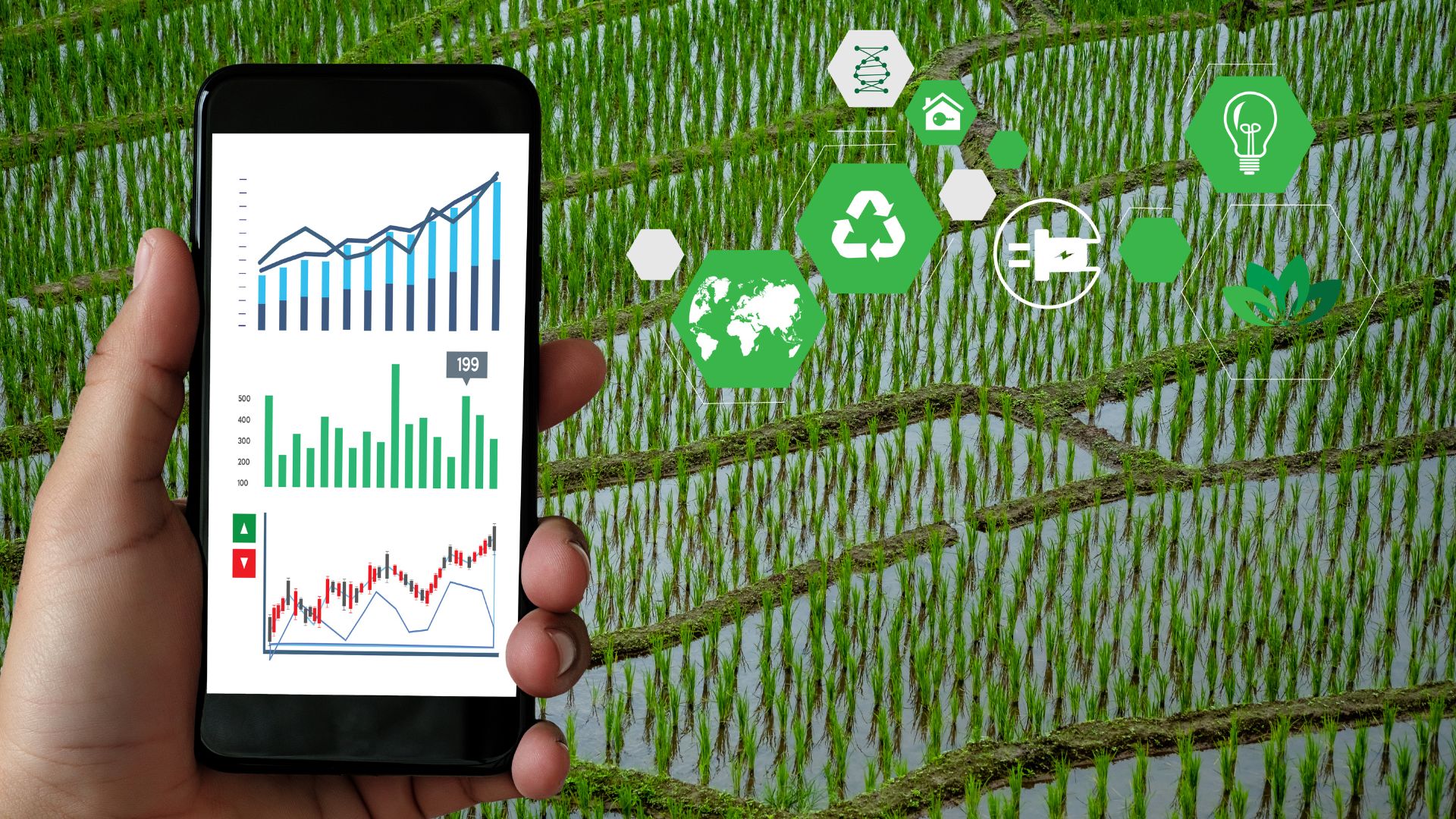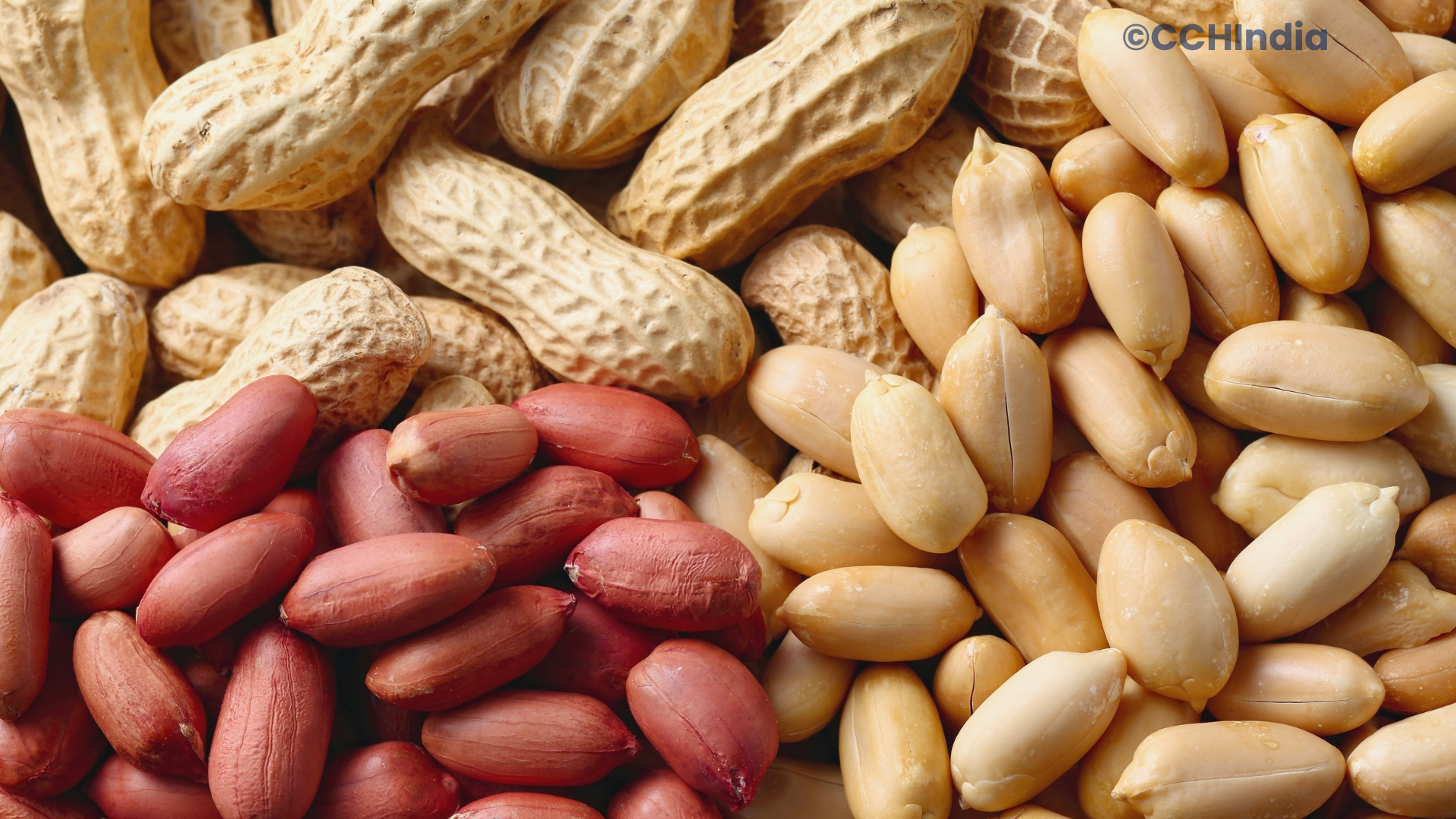The Humble Peanut: Unlocking Its Potential in Sustainable Farming and Indian Cuisine
Discover how peanuts are quietly shaping sustainable farming practices and enriching Indian kitchens, from soil health to timeless snacks.

Soil acidification and pH balance in India is an escalating challenge that is tough to tackle, impacts productivity and environmental health. Technology (AI) driven solutions can help restore soil fertility and health reinforcing food security and sustainable farming.
Table of contents [Show]
There is a prevailing imbalance of NPK fertilizer usage in India. NPK stands for Nitrogen, Phosphorus and Potassium. The current ration of N:P:K is 10.9:4.4:1 which is quite off balance and exceeds the ideal ratio of 4:2:1. This leads to excessive nitrogen application in the NPK fertilizer composition and results in a phenomenon called nitrogen leeching. This contributes to the soil acidification and many negative effects like less nutrition availability and increased pest infestation.
It is observed that 28-30% of Indian soils are acidic in nature. This is common across India, but predominantly in North Eastern, Eastern and Southern peninsular regions as well as some parts of Himalayan states, Madhya Pradesh and Chhattisgarh. As an example, Nitrogen use in Punjab is reported to be 61% higher than recommended, mostly in the form of urea. There under usage of Potash by 89% and Phosphate by 8%.
Excessive nitrogen does lead to a lush agricultural growth, making them more susceptible to sucking pests, which in turn needs higher pesticide usage. The continuous flooding of soil with synthetic nutrients degrades it’s natural structure and ecosystem. It depletes organic matter and disrupts crucial microbial activity leading to compacted soil with poor drainage and air circulation.
One critical consequence is nitrogen leeching where the nitrification of ammonium-based fertilisers and urea releases hydrogen ions in the soil, contributing to the decrease in pH levels and increased acidification. This nitrogen leeching also affects the ground water posing environmental and health risks. Many a times in the areas with heavy rainfall, essential nutrients like Phosphorus, Potassium, Calcium and Magnesium get washed away from the soil leading to acidification.
Sometimes the policy frameworks issued by the government also indirectly leads to NPK imbalance. Example, heavy subsidization of urea leads to it’s overuse. The crop may appear lush green but remain suboptimal with the nutrition levels.
This has become a negative loop or what we may call the chicken and egg situation. Soil degradation -> lower productivity -> increased fertilizer usage -> increased usage prompts use of subsidized urea -> accelerates acidification -> increased usage of pesticides and other chemicals -> soil degradation.
Soil pH is a crucial variable which has a controlling influence over agricultural processes. If it deviates from optimal levels and towards acidity, it has immense consequences for agricultural sustainability and productivity. The ideal pH range for most crops falls between 6.0 to 7.5. If it drops below 5.5, plants begin to suffer from nutrient deficiency and it worsens if the pH levels fall. Below 4.5.
Beyond direct effects on the agricultural produce, soil pH also influences the activity of micro-organisms in the soil. In highly acidic environments, the population and activity of beneficial bacteria responsible for decomposition of organic matter declines significantly. It hinders nutrient cycling, leading to an accumulation of organic matter and bound nutrients, especially nitrogen, which then remain inaccessible to plants. A reduction in pH can also alter the spectrum of soil-borne diseases and their pathogenicity, potentially leading to new or severe crop health issues.
Liming is the most widely adopted and effective method for reducing soil acidity. It alters soil chemistry to create a more hospitable environment for crops. Lime contains calcium and magnesium carbonates, oxides or hydroxides. Liming process involves applying this material which reduces soil acidity by removing hydrogen (H+) and aluminium (Al3+) ions from soil particles and neutralizing H+ ions present in the soil solution through the formation of water.
The benefits of liming are many. It increases the availability of essential plant nutrients such as nitrogen, phosphorus, potassium, sulphur, calcium, and magnesium. It also reduces the toxic levels of aluminium (Al3+) and manganese (Mn2+) prevalent in highly acidic soils.
Reduced soil acidity leads to healthier root growth which indirectly increases drought tolerance. It creates a favourable environment for growth of beneficial soil micro-organisms, crucial for organic matter decomposition and nutrient cycling. Liming contributes to better physical soil conditions by supplying calcium and magnesium which helps alleviate structural problems and increase water infiltration rates.
Despite the well-documented benefits of liming, its widespread adoption in Indian agriculture faces significant practical and economic challenges. There is a a substantial gap between the recognized need and current capacity.
Liming is a scientifically proven method but it’s effectiveness depends of the type of liming materials used, lime composition, their quality, particle size, method and timing of application. It requires precise scientific knowledge making it a complex process. It requires advanced guidance and capacity building.
India would require an estimated 70 million metric tonnes (MMT) of lime annually (at an estimated 500 kg/ha) to neutralize existing soil acidity. However, India's lime production in 2023 reached only 3.78 million metric tons This is a staggering 95% shortfall between the estimated annual requirement and actual production. This highlights a severe supply-side bottleneck that fundamentally limits the scale of liming interventions.
The cost of lime including its application expenses, transportation and distribution in remote areas are also a challenge for many smallholder farmers who operate on thin profit margins.
The limitations of traditional soil management methods like liming highlights the urgent need for innovative technological solutions. Artificial Intelligence (AI) is emerging as a powerful tool, ushering in an era of precision agriculture that promises to revolutionize soil health management.
Traditional soil testing methods do provide accurate results but are often time-consuming, expensive, and require specialized knowledge. This limits their widespread utility for rapid and localized decision-making. With Artificial Intelligence systems in play, there is a potential to transition towards precision agriculture at a large scale that is both efficient and scalable.
Today, we have instances where AI and Machine Learning (ML) models are transforming soil analysis by providing rapid and specific assessments of critical soil properties, including pH, particle distribution, nutrient availability, and soil texture. These AI and ML models leverage vast and complex datasets collected from diverse sources, including historical climate records, remote sensing imagery from satellites or drones, and real-time data from in-field IoT-based sensors.
The continuous monitoring of soil parameters provides "real-time insights” which enables farmers to react quickly and precisely to changing soil conditions. This allows for properly timed and optimized irrigation schedules and fertilizer application reducing wastage. It improves resource efficiency. With AI tools, there is less need of traditional manual sampling and laboratory testing which also leads to “cost-efficiency”. While AI solutions maybe costly at first to develop and deploy at large scale, their long term benefits are immense.
Real-world example from India would include usage of portable devices such as CropIn's SmartFarm or Fasal's sensors to conduct in-field soil analysis. All the farmers have to do is connect their mobile phones to these Bluetooth scanners. A Mangalore-based AgriTech startup KrishiTantra has established ML based soil testing processes which offer rapid insights into soil health and provide tailored fertilizer application recommendation. Their "krishi-RASTAA" system provides real-time data on nutrient levels, pH balance and essential factors allowing farmers to make timely informed decisions about their crop needs and required actions.
Artificial Intelligence tools in soil testing are not merely an improvement or for ease but also enforces democratization of critical soil intelligence. Vast majority of Indian farmers are smallholders i.e. they cultivate on less than 2 hectares of land and more than often lack access to professional agronomists. AI powered tools provide access to data driven insights previously available only to large-scale farming operations which could afford to higher scientific help.
These AI-driven systems are instrumental in optimizing fertilizer usage enforcing the agricultural principle of "Right Fertilizer, Right Dose, Right Time, Right Place". For AI systems to succeed, it is important to have diverse data sources integrated into the system to provide real time insights and predictive modelling. AI models process satellite imagery, remote sensing data and inputs from IoT sensors. These IoT sensers have the ability to measure humidity, temperature, solar radiation, rain, wind, soil pH, moisture, electrical conductivity and nutrient composition. Satellites can analyse the geography and climatic conditions.
AI algorithms can take these varied inputs to detect early signs of pest infestations, disease outbreaks, nutrient deficiencies, and water stress, often before they are visible to the human eye. These systems can also provide hyper-local weather forecasts, which are crucial for planning critical farming activities such as sowing, irrigation, and harvesting. These advanced models can help farmers manage climate-related risks and significantly reduce crop failures.
Artificial Intelligence is slowly helping farmers make a shift from reactive farming to proactive farming. With AI, farmers’ decisions are no longer based on guess work or traditional knowledge alone but on a holistic, scientific and dynamic understanding of the farm’s environment, micro and macro factors affecting agriculture. This empowers farmers to adapt more effectively to climate change, resource scarcity, and market fluctuations, thereby building resilience and sustainability directly into the agricultural system.

Discover how peanuts are quietly shaping sustainable farming practices and enriching Indian kitchens, from soil health to timeless snacks.

मखाना, जिसे फॉक्स नट के नाम से जाना जाता है, भारत में इसकी फसल उगती है और अब वैश्विक स्वास्थ्य खाद्य (भोजन/आहार) उद्योग में इसे सुपरफूड के रूप में व्यापक रूप से स्वीकार किया जाने लगा है।

Makhana, popularly known as Fox Nut is indigenous to India and is now widely accepted as a superfood in the global health food industry.

Explore how AI shaped mental health in 2025 — from digital therapy to emotional well-being tech. Learn key lessons for a balanced human-AI future.

